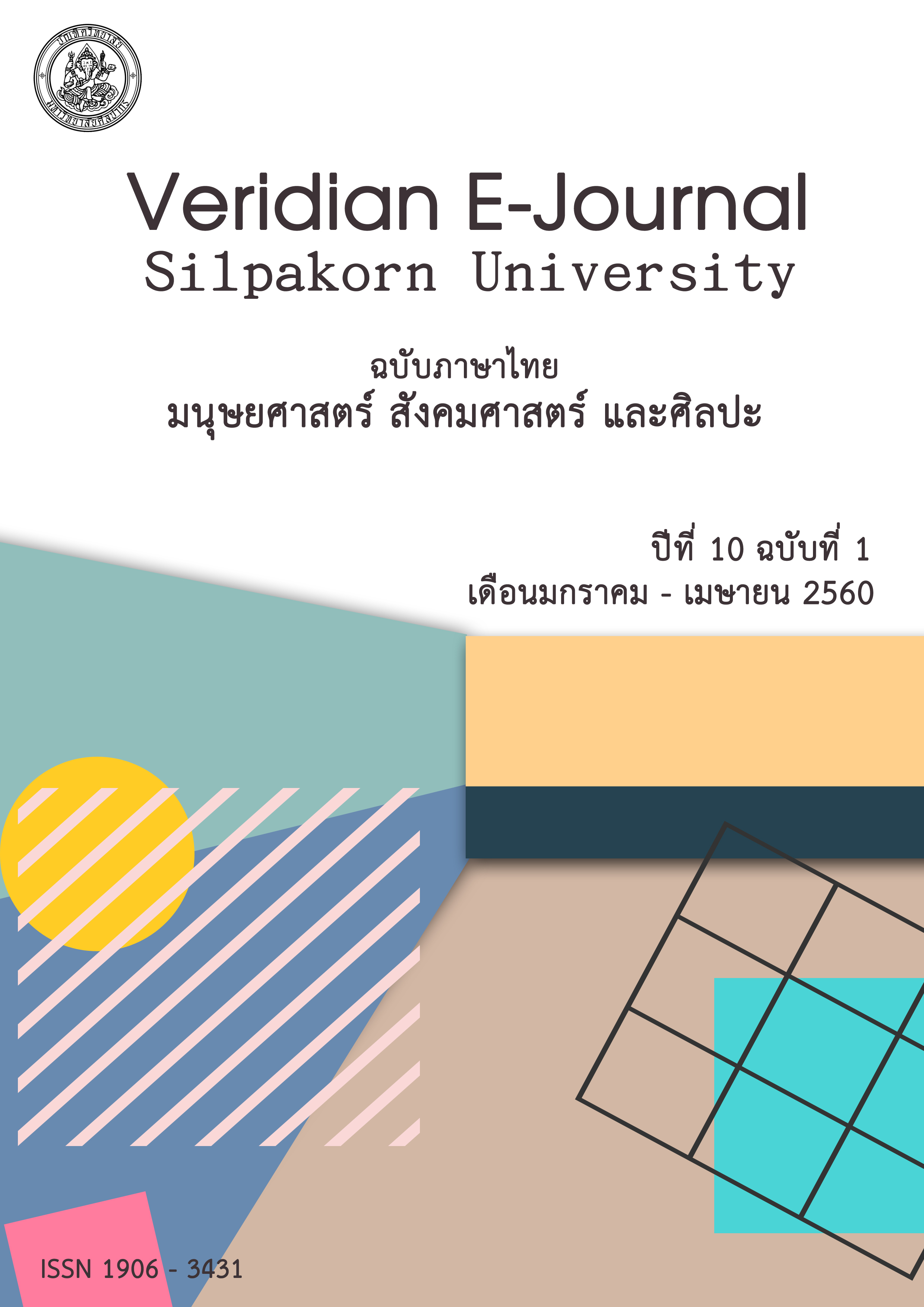แบบจำลองพาราเมทริกซ์ระบบบริหารจัดการสิ่งแวดล้อมสำหรับโรงพยาบาลส่งเสริมสุขภาพ การประยุกต์ใช้แนวทางการอนุรักษ์พลังงานสำหรับอาคาร กรณีศึกษา: อำเภอกันทรวิชัย จังหวัดมหาสารคาม
Main Article Content
Abstract
การศึกษาการประยุกต์ใช้แบบจำลองพาราเมทริกซ์ระบบบริหารจัดการสิ่งแวดล้อมสำหรับโรงพยาบาลส่งเสริมสุขภาพในระดับปฏิบัติการ (Operational Level) โดยการเลือกใช้องค์ความรู้ทางด้านสถาปัตยกรรมและเทคโนโลยีอาคารด้านการอนุรักษ์พลังงาน แบบจำลองระบบบริหารจัดการสิ่งแวดล้อมดังกล่าวประกอบด้วย 5 องค์ประกอบหลัก และ 24 องค์ประกอบย่อย โดยแต่ละองค์ประกอบจะมีค่าความสัมพันธ์ภายในที่แตกต่างกัน (Inter-Connected Correlation) การทำวิจัยครั้งนี้อยู่บนพื้นฐานของ Pragmatic Approach ทำการเก็บข้อมูลในโรงพยาบาลส่งเสริมสุขภาพ 4 แห่ง ในพื้นที่อำเภอกันทรวิชัย จังหวัดมหาสารคาม ขั้นตอนการศึกษาแบ่งออกเป็น 2 ส่วน ดังนี้ (1) การสำรวจสภาวะน่าสบายทางด้านอุณหภูมิ และ (2) การสำรวจสภาวะน่าสบายทางด้านแสงสว่างและการมองเห็น ผลการศึกษาพบว่าค่าเฉลี่ยของสภาวะน่าสบายทางด้านอุณหภูมิภายในอาคารโรงพยาบาลทั้ง 4 แห่ง ไม่มีความสม่ำเสมอของทั้งค่าอุณหภูมิอากาศ ค่าความชื้นสัมพัทธ์ และค่าอุณหภูมิพื้นผิวโดยรอบ ส่วนใหญ่อยู่นอกขอบเขตสภาวะน่าสบายเป็นช่วงระยะเวลานาน สภาวะน่าสบายด้านแสงสว่างและการมองเห็น ผลการสำรวจพบว่าอาคารโรงพยาบาลมีพื้นที่ที่แสงธรรมชาติไม่สามารถเข้าถึงได้เป็นส่วนใหญ่และเป็นพื้นที่ที่ต้องการใช้งานตลอดเวลา จึงจำเป็นต้องใช้แสงประดิษฐ์เข้าช่วย ทั้งนี้หากโรงพยาบาลดำเนินการพัฒนาองค์ประกอบโดยใช้องค์ความรู้ทางด้านสถาปัตยกรรมดังกล่าวตามข้อเสนอแนะก็จะส่งผลเชิงบวกต่อองค์ประกอบอื่นๆ ตามค่าความสัมพันธ์ภายใน การศึกษาดังกล่าวแสดงให้เห็นถึงความเป็นเหตุเป็นผลและความเป็นไปได้ในการประยุกต์ใช้แบบจำลองพาราเมทริกซ์ดังกล่าวในสถานพยาบาล
Combining knowledge in architecture and building technology for energy conservation, the parametric model of an Environmental Management System (EMS) is developed. The Health Promoting Hospitals (HPHs) at operational level were selected as case studies. The mentioned management system model comprises of 5 system parameters and 24 constituent variables that each of them has an individual value of inter-connected correlation differently. This research is a pragmatic approach, research data were collected from 4 selected HPHs in Kantrarawichai District, Maha Sarakham Province. The research methodology is divided into 2 parts; (1) a survey of thermal comfort and (2) a survey of lighting and visual comfort. The results demonstrated that a thermal comfort in all 4 case studies are fluctuated with a value of temperature, relative humidity and Mean Radiant Temperature (MRT), all of which are out of thermal comfort zone for a very long time period. The results of the lighting and visual comfort survey show that natural light cannot reach the main areas of the hospital’s buildings; in which they are operational areas of the hospital. As a consequence, artificial light has been used in order to improve a lighting and visual comfort. The study gives a suggestion that if the mentioned HPHs try to develop the EMS by using the knowledge of architecture as recommendations, positive influences will be affected to the other system components based on values of inter-connected correlation. This research showed rational and possibility in applying to use this parametric model in the HPHs.
